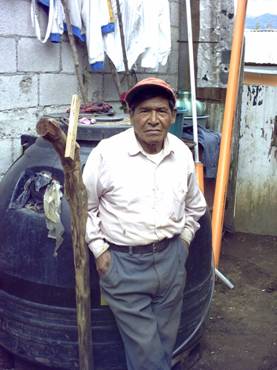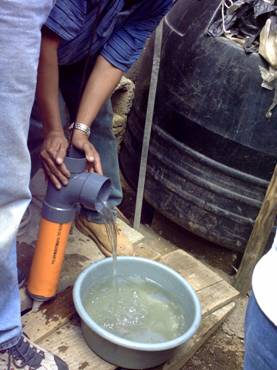Cisterrns
A
Cistern for a Brother
Some improvement is made
when each home has a larger cistern for the storage of non-potable
water for washing and some irrigation. In regions where rainfall is
adequate, seasonal collection can significantly lighten the load.
The photo below shows a
friend standing in front of his plastic 1100-liter potable water
storage. The next photo is of a pump designed to lift water out of
his cement-block cistern immediately below the pump.


This pump cost 60% less than those
currently in use in nearby households, enabling the resident to
purchase additional sheet metal to channel rain water into his
cistern. In addition to the visible plastic fittings, this pump
utilized (a) leather from an old boot, (b) a toy marble, (c) pieces
cut from the tread of an old tire.
This
location receives an average of about twenty-one feet of rain per
year in a six month period with, almost nothing for the other six,
making cisterns very practical here.
If
cisterns were built round instead of square, you would have 27% more
volume for the same perimeter material, and the wall could be thinner
. The greater structural support provided by a circle would also
offer greater earthquake resistance. This of course would only apply
to cisterns built into the earth.
One
very important consideration is that if care is not taken, cisterns
near ground level could become dangerous breeding grounds for
mosquitoes. Proper sealing and screening would be of utmost
importance.



